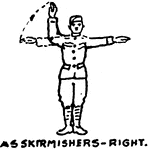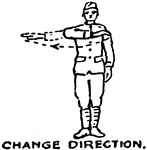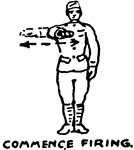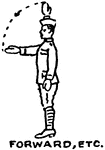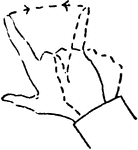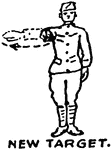Clipart tagged: ‘command’

As Skirmishers, Guide Center, March Signal
"Raise both arms laterally until horizontal; swing both simultaneously upward until vertical and return…

As Skirmishers, Guide Right (Left), March Signal
"Raise both arms laterally until horizontal; hold the arm on the side of the guide steadily in the horizontal…
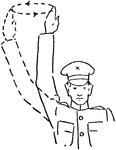
Assemble, March
"Raise the arm vertically to its full extent and describe horizontal circles." — Moss, 1914
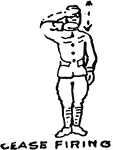
Cease Firing
Order given to stop hostilities on the battlefield. Soldiers stop shooting their weapons when this signal…

Change Direction Signal
"The hand on the side toward which the change of direction is to be made is carried across the body…
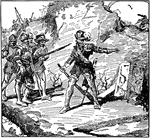
Do Not Shoot Till I Do
An army general commanding his troop not to shoot until he takes the first shot.

Double Time
Marching at twice the cadence of "Forward March;" 100 to 180 steps per min. something of a light jog.…
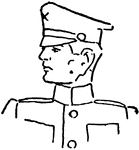
Eyes right
At the command right, turn the head to the right oblique, eyes fixed on the line of eyes of the men…

Fix Bayonet
Order give to soldiers instructing them to attach their bayonets to the end of their rifles.

Halt
"Carry the hand to the shoulder; rapidly thrust the hand upward the full extent of the arm several times."…

Hand signal
"To announce range, extend the arm toward the leaders or men for whom the signal is intended, fist closed;…
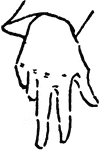
Hand signal
"To change elevation, indicate the amount of increase or decrease by fingers; point upward to indicate…
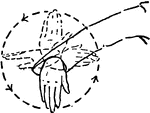
Hand signal
"Extend the arm horizontally toward the platoon leader; describe small circles with the hand." —…

Kneel
"Kneel on right knee, sitting as nearly as possible on the right heel; left forearm across left thigh;…
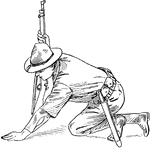
Lie Down
"Carry back the left foot and lie flat on the belly, inclining the body about 35 degree to the right."…

Lie Down
"Carry back the left foot and lie flat on the belly, inclining the body about 35 degree to the right."…
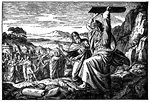
Moses Breaks the Stone Tablets on Which the Ten Commandments are Written
"And it came to pass, as soon as he came nigh unto the camp, that he saw the calf and the dancing: and…
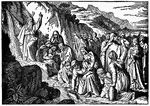
Moses Strikes the Rock and Water Flows in the Desert
"Behold, I will stand before thee there upon the rock in Horeb; and thou shalt smite the rock, and there…

Quick Time
The signal to march at the faster pace of 'quick time.' The Royal Navy marches at a cadence of 116 paces…

Section
Signal to inform the troops that the next signal will be directed at a certain 'section' rather than…

Squad
"Extend the arm horizontally toward the platoon leader; swing the hand up and down from the wrist."…

Squad
Signal to inform the troops that the next signal will be directed at a certain 'squad' rather than everyone.

Squad Right About, March
"Extend the arm vertically above the head; carry it laterally downward to the side and swing it several…

Stack Arms
"Throws the butt about 2 feet in advance of that of his own piece and opposite the right of the interval,…

Stack Arms
"He then turns the barrel outward into the angle formed by the other two pieces and lowers the butt…
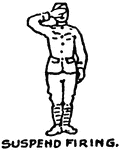
Suspend Firing
Order given to troops instructing them to stop firing. Weapons are held, locked and loaded so that they…
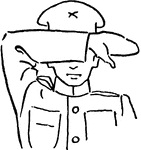
Suspend Firing
"Raise and hold the forearm steadily in a horizontal position in front of the forehead, palm of the…

Take Aarms
"Each even number of the front rank diengages and detaches his piece by turning it to the left." —…

